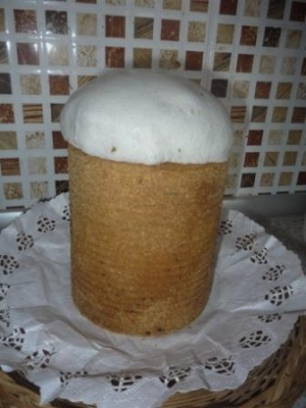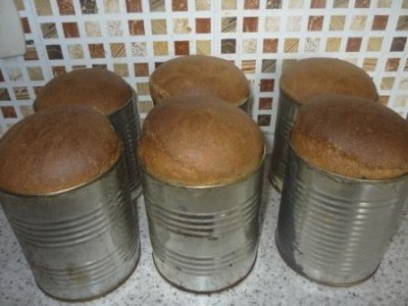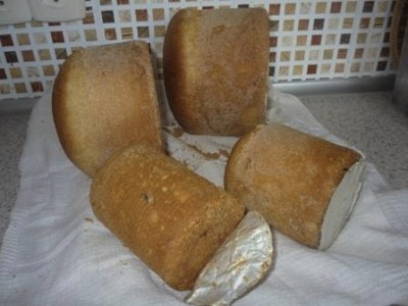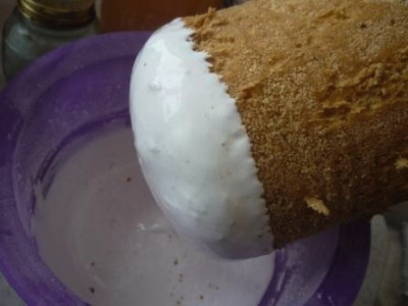Easter cake with sourdough in a bread maker
0
419
Kitchen
Russian
Calorie content
201.7 kcal
Portions
6 port.
Cooking time
27 h.
Proteins *
5.1 gr.
Fats *
4.6 gr.
Carbohydrates*
43.3 gr.
The dough for Easter cake according to this recipe is prepared with sourdough and it is very convenient to knead it in the bowl of a bread machine, and then bake it in the oven.
Ingredients
Cooking process
Take 3 tablespoons. kvass sediment and mix with warm water (35-40 ml) and wheat flour (50 gr.). You should have a soft dough weighing about 80-85 grams. Leave the future starter culture for 4-6 hours. Then feed her with the same amount of flour and water. Stir to make a dough of the same consistency again. Feed again after 4-6 hours. Leave "to mature" again. Separate 200 g from the finished starter culture, put the remaining starter culture in the refrigerator.
Break the eggs into a bowl and beat them a little with a fork. Then add sugar, vanillin and orange zest. Stir again. Pour milk and egg-sugar mass into a deep container (it is convenient to use a three-liter jar). Send the prepared starter culture, previously crushed into pieces, there. Close the jar with a lid and place in a warm place for 8-12 hours.
Rinse the raisins with warm water and soak for 10-15 minutes. It should swell and soften. Cut the candied fruits. Melt the butter on the stove or in the microwave. While continuing to knead the dough, add the melted butter to it. This stimulates the development of gluten. Also at this stage add 1.5 tbsp. kvass sediment, feeding is needed for young sourdough.
While the bread maker is kneading the dough, prepare the baking dishes. If you wish, you can bake the cake in a bread maker, but this amount of dough cannot be baked in one go. Place a piece of parchment at the bottom of each mold, and grease the walls with vegetable oil and sprinkle with breadcrumbs.
Bon Appetit!














